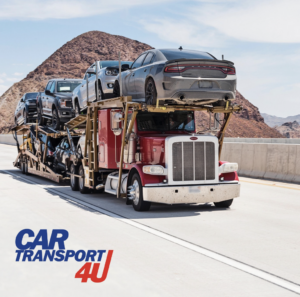Save Your Car from Flood Damage: Follow These Tips
When your car is suddenly submerged in water due to flooding, it can be a stressful experience. The resulting damage to your car can be significant and costly to repair. Fortunately, there are steps you can take to help save your car from flood damage. In this blog post, we’ll provide you with tips and advice on how to protect your car from flood damage, as well as what to do if your car was already flooded. Read on for more information about preventing and dealing with flood damage to your car.
One of the first things you should do if your car has been flooded is to check the oil. If water has mixed with the oil, it can cause serious damage to the engine. To check the oil, remove the dipstick and wipe it clean. Then, reinsert the dipstick and remove it again. Check the oil level and its color. If the oil is milky or has a brownish color, it’s a sign that water has mixed with the oil. In this case, don’t attempt to start the engine, as it could cause further damage. Instead, contact a mechanic for further guidance on what to do next.
When your car is flooded, one of the first things you should do is disconnect the battery. This is an essential step as it prevents further damage to your car’s electrical system. If the battery is left connected, it may cause a short circuit or corrosion. To avoid this, locate the battery and carefully disconnect it. If you’re not sure how to do this, refer to your car’s owner’s manual or seek the assistance of a professional mechanic.
It’s important to disconnect the battery before attempting any other steps as it can help you avoid any unexpected electrical shocks. Remember, even if the water has receded, the electrical components may still be wet and dangerous. To stay safe, be sure to put on rubber gloves before disconnecting the battery.
Once you’ve disconnected the battery, inspect it for any damage or corrosion. If you find any, it may be time to replace it. However, if you don’t see any visible damage, store the battery in a dry place to prevent it from getting wet or further damaged. You can also have it checked by a professional mechanic.
Overall, disconnecting the battery is an essential step in the process of saving your car from flood damage. By doing so, you’re taking the necessary steps to protect your car’s electrical system and ensuring your own safety. Remember to be cautious, follow the manufacturer’s instructions, and seek professional help when needed.
One of the most important steps in saving your car from flood damage is to remove the spark plugs. This is especially important if your car was submerged in water. When water enters the engine through the air intake, it can cause hydrolock, which is when water enters the combustion chamber and prevents the engine from turning over.
To remove the spark plugs, you will need a spark plug wrench or socket. First, locate the spark plugs under the hood of your car. They will typically be located near the top of the engine and will have spark plug wires running to them. Next, use the wrench or socket to carefully loosen and remove each spark plug. Be sure to label each plug as you remove it, so you know which one goes where when it’s time to reinstall them.
After you have removed the spark plugs, you will want to turn the engine over a few times to help expel any water that may be in the combustion chamber. You can do this by turning the key to the “on” position for a few seconds, or by manually turning the engine over using a wrench on the crankshaft pulley. This will help to prevent hydrolock and other damage to the engine.
Once you have removed the spark plugs and turned the engine over a few times, you can reinstall the plugs and spark plug wires. Be sure to tighten them to the manufacturer’s recommended torque specification. This step is crucial to ensure that your engine runs smoothly and efficiently.
By following these steps, you can help to prevent serious damage to your car’s engine after it has been flooded. It’s important to remember that water damage can be unpredictable, and you should always have your car inspected by a professional to ensure that it is safe to drive.

Once the floodwater has been drained out of your car, you’ll need to start drying out the interior to prevent mold and mildew growth. The first step is to remove any wet or damp items from the car, including floor mats, seat covers, and other removable items. Wipe down the surfaces with a dry cloth or towel to remove any excess moisture.
To help speed up the drying process, use a wet/dry vacuum cleaner to remove any standing water from the floor or seats. Then, open all the doors and windows and leave them open for several hours to allow the interior to air out. If the weather is sunny and warm, park your car in the sun to help speed up the drying process.
If your car has carpeting, it’s important to remove the carpet and dry it out separately. You can use a carpet extractor to remove any excess water, then hang the carpet in the sun to dry. Make sure the carpet is completely dry before reinstalling it in your car.
While your car is drying out, you can also use a dehumidifier to help remove any excess moisture from the air. This will help prevent mold and mildew from growing in your car.
It’s important to remember that even after you’ve dried out the interior, there may still be moisture trapped in hard-to-reach areas like the dashboard or door panels. If you notice any signs of mold or mildew, it’s best to have your car inspected by a professional to ensure that all the moisture has been removed.
Floodwater can quickly lead to mold and mildew growth in your car’s interior, which can be hazardous to your health. It’s important to thoroughly inspect your car for any signs of mold and mildew after it’s been flooded.
Start by removing all the seats and carpeting, and check for any discoloration or musty smells. Mold and mildew typically grow in warm, humid environments, so make sure you’re checking every nook and cranny, especially areas that don’t receive much airflow.
If you find mold or mildew, use a mixture of white vinegar and water to clean the affected area. Wear protective gloves and a mask to prevent any inhalation of the spores. You may also want to invest in a dehumidifier to help remove excess moisture from the car’s interior.
If you’re unsure of how to properly clean mold and mildew or are concerned about any health risks, it’s best to contact a professional to assist you. Mold and mildew can quickly spread and cause damage to your car’s interior, so it’s important to address the issue as soon as possible.
By taking the time to check for mold and mildew after a flood, you’ll not only protect your car, but you’ll also keep yourself and your passengers safe from potential health hazards.
Have the Car Inspected by a Professional
After a flood, it’s important to have your car inspected by a professional mechanic to determine the extent of the damage. Even if your car appears to be running normally, there may be underlying issues that can cause problems in the future.
A mechanic will be able to check for any water damage that may have affected the electrical systems, including the battery, alternator, and starter. They will also check the brakes, transmission, and engine for any damage or corrosion caused by exposure to water.
It’s important to note that flood damage may not be covered by your insurance policy, so it’s a good idea to get an estimate from the mechanic before proceeding with any repairs. If the cost of repairs exceeds the value of your car, it may be better to consider selling it for parts or donating it.
Remember, even if your car seems to be running fine after a flood, it’s always better to be safe than sorry. Getting a professional inspection will give you peace of mind and help ensure your car is safe to drive on the road.

Route
4U - Car Shipping & Logistics
Email: info@cartransport4u.com
URL: https://cartransport4u.com/
| Monday | 09:00 - 17:00 |
| Tuesday | 09:00 - 17:00 |
| Wednesday | 09:00 - 17:00 |
| Thursday | 09:00 - 17:00 |
| Friday | 09:00 - 17:00 |
| Saturday | 09:00 - 17:00 |
| Sunday | 09:00 - 17:00 |
East Coast USA
(857) 406-8183
54 Farm Rd
Marlboro, MA
01752

